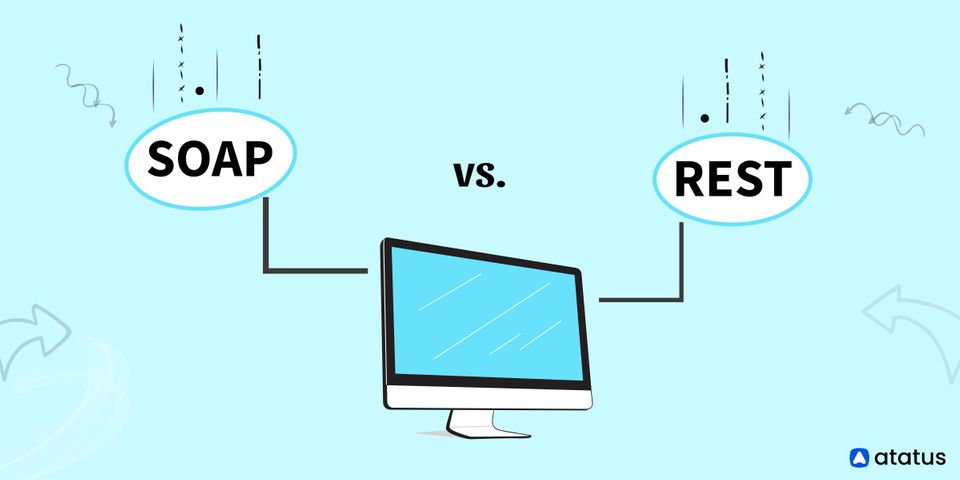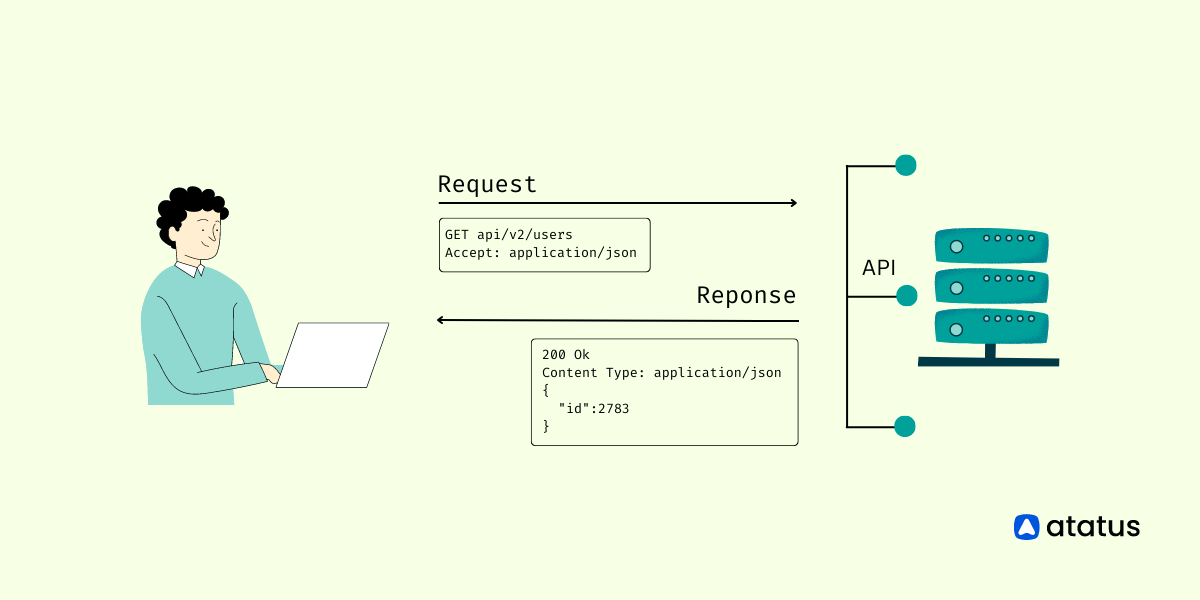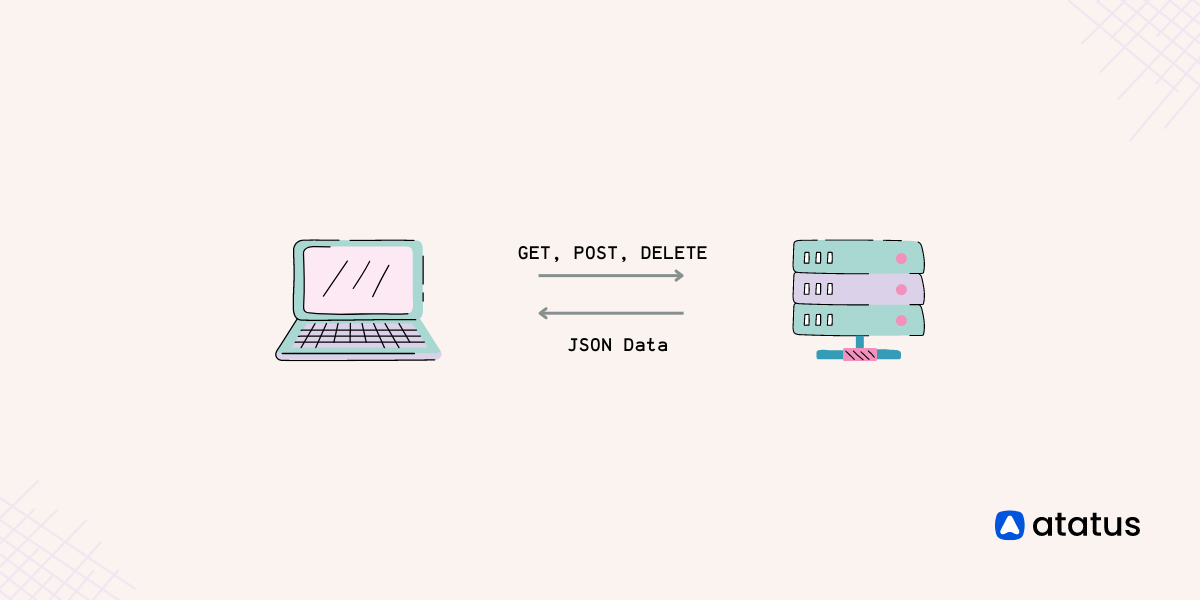SOAP vs. REST: What's the Difference?
Numerous technologies underpin the web services we use daily. Web APIs are an essential component of the internet world. A web browser or a web server can use an API. When writing web code, developers must select the Web API that best fits the needs of their project.
Web APIs come in a variety of forms. They enable two applications to communicate with one another using a set of rules. These APIs allow developers to add specialized features to their applications without having to rewrite the entire codebase.
SOAP and REST are two of the most commonly used terminologies in the API development industry. They're popular among developers because of their ease of use and functionality.
We will go over the following:
- What is SOAP?
- Advantages and Disadvantages of SOAP
- What is REST?
- Advantages and Disadvantages of REST
- SOAP vs. REST: What's the Difference?
- When Should SOAP be Used?
- When Should REST be Used?
- SOAP vs. REST: Which is Better?
What is SOAP?
SOAP (Simple Object Access Protocol) is an XML-based HTTP protocol for interacting with web services. It was created as an intermediary language to allow applications written in diverse programming languages to communicate efficiently with one another.
SOAP is a protocol for exchanging XML data between web services. Both stateful and stateless activities are supported by SOAP.
The term "stateful" refers to the server's ability to retain the information it gets from the client across repeated requests. The server is aware of the prior queries since these requests are chained together. Bank transactions, flight reservations, and other such activities are examples.
The server does not need to bother with stateless messages because it knows enough information about the client's state.

Advantages and Disadvantages of SOAP
Now that you know the basics of SOAP, it's time to learn about the advantages and disadvantages of using it as a developer.
Advantages of SOAP
- Built-in Error Handling
Built-in error handling is beneficial because if a request fails, the response will contain error information that can be utilized to resolve the issue. This takes the guessing out of figuring out what went wrong. - Highly Secure
SOAP APIs are used for high-security web services at the enterprise level. Payment gateways, financial services, CRM applications, and other APIs that use SOAP are among the most common. - Legacy System Support
SOAP is also favored because of its compatibility with legacy systems. Users who have been using a service for a long time may continue to use it through the API. This ensures that people who have access to legacy systems can continue to do so. - Supports Stateful Operations
By default, SOAP APIs are stateless, but the beautiful thing about SOAP is that it also supports stateful operations. Web Services Specifications, which are developed on top of the XML standards, can be used to do this.
Disadvantages of SOAP
- API Calls are not Cached
An API call is a process of sending a request when an API has been set up with the necessary endpoints. The information is transferred, processed, and feedback is supplied as a result of the process. It is not feasible to cache SOAP API requests. - Extremely Complicated
SOAP is substantially more sophisticated than REST. It is also less adaptable. For developers who aren't very experienced, this could be a problem. Performance may be slowed as a result of the substantial processing required. - No Choice of Data Formats
SOAP's support for data formats is likewise severely constrained. HTML, JSON, YAML, XML, and more formats are supported by REST. SOAP, on the other hand, only supports XML. - Requires More Bandwidth
SOAP is often slower than REST, and it also consumes more bandwidth due to its complexity. It's also a limiting issue in the technology's efficacy for some applications.
What is REST?
REST (Representational State Transfer) is an architectural approach to communication that is commonly utilized in the creation of web services. It's a client-server model with no state. RESTful web services are those that are defined using the REST concept.
When a client uses a RESTful API to make a request, it sends the server a representation of the resources' current state. This data can be delivered in a variety of formats through HTTP, including JSON, HTML, XLT, and Plain Text, although JSON is the most commonly utilized language due to its machine and human readability.

It employs a resource identifier to identify the specific resource that is required in component interaction. The GET, HEAD, POST, PUT, PATCH, DELETE, CONNECT, OPTIONS, and TRACE actions are available when HTTP is used in a transition, which is the most typical case. Developers don't need to install any additional software or libraries while creating a REST API because of the common use of HTTP.
Advantages and Disadvantages of REST
Now that you know the basics of REST, it's time to learn about the advantages and disadvantages of using it as a developer.
Advantages of REST
- Flexibility
One of the most significant advantages of a REST API is flexibility. Data is not connected to any resources or processes, allowing for greater data flexibility. REST may thus handle a variety of calls and provide data in a variety of formats. With proper hypermedia implementation, it can even alter architecture. - REST APIs are Stateless
REST APIs are distinct since they are stateless. In this case, stateless means that the server does not keep track of past requests or responses. Since each communication is separate, all of the data must be supplied with the request. Every request becomes more intelligible and purposeful as a result. - Scalability
The REST API is also popular among developers due to its scalability possibilities. REST is based on the idea that the client and server should be kept separate for them to evolve independently. This makes it easier for the development team to scale the product. - Uniform Interface
Developers adhere to the same standards, which implies that each API has a consistent user interface. Thus, a REST API from one application can communicate with a completely different application, in the same way, allowing for more efficient communication.
Disadvantages of REST
- Constraints
REST APIs are generally constrained by six architectural restrictions, including a unified interface, client-server nature, stateless operations, layered system design, and so on. Before you start constructing an API, you should be aware of these limitations. - Lacks Security
REST does not impose any security protocols, unlike other Web APIs. This indicates that if the service requires confidential data to be transferred between the client and the server, it isn't the best technology. It is, nevertheless, better suited to publicly accessible services. - Learning Curve
When it comes to establishing a REST API, developers who aren't highly trained may face a steep learning curve. If they don't comprehend the limitations of this web technology, they may find themselves frustrated by its restrictions. - Limited Transfer Protocol Support
Other Web APIs, such as SOAP, support a wide range of transport protocols, including but not limited to HTTP, SMTP, UDP, and others. REST suffers from this limitation because it only supports the HTTP transfer protocol.
SOAP vs. REST: What's the Difference?
To access named resources, REST uses a solitary, consistent interface. When exposing a public API over the internet, it's most usually used. In contrast, SOAP exposes application logic components as services rather than data. It also works with a variety of user interfaces.
Simply put, REST accesses data, whereas SOAP executes activities using a more standardized set of communications standards. Still, in most circumstances, REST or SOAP could be used to achieve the same result (and both are infinitely scalable), with minor configuration modifications.
SOAP was developed by Microsoft and has been around far longer than REST. As a result, it has the benefit of being a well-established, heritage protocol. REST, on the other hand, has been around for quite some time. It also came into the picture as a mechanism to access web services in a much simpler manner than SOAP via HTTP.
When Should SOAP be Used?
In the following situations, SOAP should be used.
- Asynchronous Processing and Subsequent Invocation
If the client requires a certain level of reliability and security, the new SOAP standard offers several extra features, particularly in terms of security. - Formal Communication
SOAP provides rigid specifications for this type of interaction if both the client and the server agree on the exchange format. - Stateful Operations
The SOAP standard provides the WS* structure to satisfy such requirements if the application requires the state to be maintained from one request to the next.
When Should REST be Used?
When creating web services, one of the most contentious issues is whether REST or SOAP should be utilized. Some of the important considerations that determine whether or not REST or SOAP API technology should be utilized for web services are listed below.
REST services should be used in the following scenarios.
- Caching
REST is the way to go if you need to cache a huge number of queries. This may increase the number of requests sent to the server. Caching can help reduce the number of times a user visits the webserver. - Coding Simplicity
REST Services are significantly simpler to code and implement than SOAP. REST is the way to go if you need a quick win solution for web services. - Limited Bandwidth and Resources
REST should be utilized when network capacity is a problem because SOAP messages are more content-heavy and take significantly more bandwidth. - Statelessness
REST should be used if there is no requirement to maintain a state of information from one request to the next.
SOAP vs. REST: Which is Better?

Unless there's a compelling need to utilize SOAP instead, most experts agree that REST should be the preferred platform. However, there are some extremely specialized use cases where SOAP is the natural solution.
When REST isn't an option, SOAP is a great alternative, especially when stateful activities need to be handled. A SOAP API allows you to perform a series of tasks in a single transaction. Something that a Rest API will not allow you to do.
SOAP is naturally preferred by those wishing to construct enterprise-level web services because of its robust security features. PayPal's public API is one of the most well-known SOAP APIs.
PayPal customers can use this API to accept payments via PayPal and credit cards, as well as add a PayPal button to their websites and eCommerce stores and log in with PayPal.
Given the growing popularity of REST, the majority of developers that create public APIs now use it. REST APIs are provided by all of the major social media platforms, allowing developers to easily integrate their applications with the platform.
One such example is Twitter's public API. It has several functions, including allowing users to search for historical tweets, an ad API for managing ads, and a Direct Message API for sending personal messages to users.
Both SOAP and REST have advantages and disadvantages. The degree to which one is superior to the other is primarily determined by the needs of the organization. They'll have to choose the API that makes the most sense for their particular scenario. REST is commonly used by enterprises that need to provide public APIs because of the advantages it provides.
REST is also recommended for most new APIs since it requires less development work and consumes less bandwidth. Developers will find it easier to grasp, making the first development of APIs a breeze. Those who need to send secret data over the API will prefer SOAP due to its increased security.
Conclusion
At the end of the day, the optimal protocol is the one that makes the most sense for your company, the types of clients you need to accommodate, and your flexibility requirements.
The two most common web services, SOAP and REST, were discussed. In different contexts, each has its significance. We must select one of them based on our requirements and the application's complexity. REST is easier to develop, but SOAP gives a variety of other options, making it significantly more complicated to design.
Atatus API Monitoring and Observability
Atatus provides Powerful API Observability to help you debug and prevent API issues. It monitors the consumer experience and is notified when abnormalities or issues arise. You can deeply understand who is using your APIs, how they are used, and the payloads they are sending.

Atatus's user-centric API observability tracks how your actual customers experience your APIs and applications. Customers may easily get metrics on their quota usage, SLAs, and more.
It monitors the functionality, availability, and performance data of your internal, external, and third-party APIs to see how your actual users interact with the API in your application. It also validates rest APIs and keeps track of metrics like latency, response time, and other performance indicators to ensure your application runs smoothly.
#1 Solution for Logs, Traces & Metrics
APM
Kubernetes
Logs
Synthetics
RUM
Serverless
Security
More





